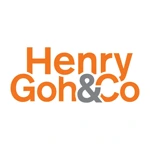
The Federal Court’s decision in SKB Shutters Manufacturing Sdn Bhd v Seng Kong Shutter Industries Sdn Bhd & Anor (“SKB Shutters”) has been widely reported and commented on. Briefly, the Federal Court decided that if an independent claim of a patent was established as invalid in the course of litigation, a claim dependent on that independent claim had no separate life of its own. The dependent claim could only be maintained by re-writing it as an independent claim including all the limitations of its parent claim. Under the Patents Act 1983, such an amendment could not be made by the Registrar when there were pending court proceedings for infringement or invalidation. In other words, the validity of a patent hinged solely on the validity of its independent claim or claims.
It would not be an exaggeration to compare this ruling by Malaysia’s apex court with a strong earthquake hitting local patent owners and practitioners. Naturally, after any earthquake, there are disturbing aftershocks. The decision serves as an unfortunate precedent that the lower courts in Malaysia are bound to follow in similar circumstances. The Kuala Lumpur IP High Court’s decision in Merck Sharp & Dohme Corp & Anor v Hovid Bhd (“Merck”) is a case in point. This was a patent infringement suit in which the defendant counterclaimed for invalidity. Following trial, the Court decided that Claim 1 of the patent was invalid for lack of inventive step. All the remaining twenty-one claims were dependent on Claim 1. The Judge, the Honourable Datuk Wong Kian Kheong stated:
The issue (whether the Court may invalidate only independent claims under s 56(3) PA without invalidating other dependent claims) and the parties’ contentions in SKB Shutters Manufacturing are similar to this case. As a matter of stare decisis, I am bound by the Federal Court’s judgment in SKB Shutters Manufacturing and upon the invalidation of Claim 1 for lack of an inventive step –
(1) all the Dependent Claims shall be consequentially invalidated without a need for the Defendant to adduce evidence to invalidate each Dependent Claim. Nor is there a requirement for the Court to consider separately the validity of each Dependent Claim; and
(2) s 56(3) PA only allows the Court to invalidate some independent claims or part of an independent claim. Unlike ss 63 and 75 PA 1977 (UK), the Malaysian Court has no power under s 56(3) PA to amend a dependent claim when the independent claim in question is invalid. Accordingly, the Court has no power under s 56(3) PA, let alone the Court’s Notional Amendment Power, to amend the Dependent Claims so as not to invalidate the Dependent Claims.
It is understood that MyIPO is as much concerned by the SKB Shutters ruling as the IP profession in Malaysia. Amendments to the Patents Act are expected to be proposed to address the issue of how a validating amendment of a patent’s claims may be realized in the course of litigation. Until such changes come into force, infringers will have the upper hand. Obviously, this goes against the grain of government policy that has invested significantly in promoting IP ownership.
In the Merck case, the invention related to the use of alendronate in oral form as a medicament for inhibiting bone resorption in humans. Such use of alendronate was known in itself. The issue of patentability boiled down to the dosage amount and schedule. The sole independent claim was in Swiss-type second medical use format. The defendant counterclaimed that the claim was directed to a dosage regimen which was a non-patentable method of treatment under section 13(1)(d) of the Patents Act. The plaintiffs contended that the subject-matter of a Swiss-type claim was not an excluded method of treatment. They relied on the EPO’s Enlarged Board of Appeal (EBOA) decision in EISAI/Second Medical Indication and the English Court of Appeal’s judgment in Actavis UK Ltd v Merck & Co Inc.
In the decision, the Judge stated:
I am of the following view regarding decisions of EPO’s BOA and EBOA:
(1) the decisions of EPO’s BOA and EBOA are not binding on Malaysian Courts; and
(2) the decisions of EPO’s BOA and EBOA are persuasive and may be applied by Malaysian Courts in respect of a particular issue when the applicable provision in EPC is identical or similar to our PA.
After further elaboration:
Articles 53(c) and 54(4) EPC are substantially similar to ss 13(1)(d) and 14(4) PA. Accordingly, I am of the opinion that decisions of EPO’s BOA and EBOA on Articles 53(c) and 54(4) EPC are persuasive and may be resorted to in the construction of ss 13(1)(d) and 14(4) PA.
Section 14(4) of the Malaysian Patents Act declares:
The provisions of subsection (2) [definition of “prior art” for the purpose of novelty] shall not exclude the patentability of any substance or composition, comprised in the prior art, for use in any method referred to in paragraph (d) of subsection (1) of section 13, if its use in any such method is not comprised in the prior art.
Accordingly, the Court decided that a Swiss-type claim, even one directed to a dosage regime, is patentable according to section 14(4), provided of course the other patentability requirements are met. This appears to be the first judicial interpretation in Malaysia of the permissibility of such claim formats. It is a welcome confirmation of current MyIPO practice.
The finding in Merck and its reliance on European case law also contrasts poignantly with the Federal Court’s SKB Shutters ruling. In SKB Shutters, the Federal Court rejected arguments based on provisions in the UK Patents Act 1977. The latter were significantly different from those in the Malaysian Patents Act and so were not persuasive for interpreting the law on amendment of Malaysian patents in the course of litigation. Overall, the Merck case may be seen as something of a mixed bag of findings for patent owners. Attacks on validity of the patent based on lack of novelty and insufficiency failed, whereas the conclusion that Claim 1 lacked inventive step was fatal to the validity of the whole patent. There were also interesting observations on the role of expert witnesses and the importance of correctly identifying the relevant person skilled in the art. Regardless of the final outcome, Merck is yet another remarkable milestone in the development of Malaysian patent case law.



